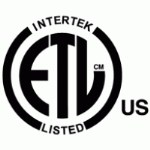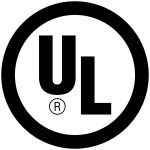|
CALL NOW! toll-free M-F 8-5 Central
Dallas
Fort Worth/Arlington Areas
Hillsboro/Waco Areas
Sherman/Greenville/Paris
Denton/North Texas Areas
Dallas Areas Email our Sales Team
|
Will Your New Video Display SignBecome Obsolete Soon?Many people who purchase Chinese LED Signs, knowingly or unknowingly, quickly find that they cannot purchase parts for their sign (sometimes within a matter of weeks.) "...the sign will be dismantled. ...not knowing when and how to get parts was a major factor..." Cathy Clarke, Johnson Elementary School, Southlake. They threw away their $40,000 six-month old sign because they couldn't get parts to repair it (company out of business.) Can this happen to you? The Chinese’ problem is with complete LED displays and is politically caused. The Chinese Government financially supports a new Chinese company to get it into business. Big time support. When they stop their support the company almost always goes out of business. No one knows where the company got their parts, so the product cannot be repaired, even though their parts are probably still being made, somewhere. Many times Chinese “brokers” sell the unsuspecting these signs after the manufacturing company is already bankrupt, assumingly without telling them the facts. “Buyer Beware” is an accepted part of the Chinese culture. Sunburst LED Signs™ are made in Dallas, Texas. Parts are made for us in many locations, but they are parts, not signs. If we have a problem with a parts supplier we have a different company build the same part for us. Sunburst LED Signs™ , and the parent company Signs Manufacturing Corporation are solid companies, have been here 36 years so far, and parts availability will continue. We want to continue to buy groceries! Clearly it is to your advantage to purchase your sign from the sign manufacturer, not someone importing completed signs. No matter what an importer says, they have no control. Buyer Beware. How Can You Determine if a Sign is Imported?This could be difficult since many small sign companies try to hide the fact that they import their signs by placing their own label on the exterior of the sign. It is difficult, normally, for a customer to view the interior of a sign cabinet.
ETL and UL are the industry-leading testing laboratories, and 80% of everything electrical is tested by them. Both companies have testing laboratories worldwide, including in China. If they have approved a sign their Listing label will be on the exterior of the sign. Every major US Video Display and Electronic Message Center manufacturer manufactures Listed signs. Virtually all Texas cities, counties, and the State of Texas adopt the National Electric Code (NEC) as their electrical code. The NEC REQUIRES that a sign be Listed to be installed. If you purchase an un-listed sign you might have trouble when it is installed. Click "here" for more details on Listed signage. Incidentally, sellers of signs manufactured in China often brag that their sign is IP 65 rated. This is BAD; it means that the sign is dustproof and substantially able to keep out water sprayed at the sign from any direction – in other words, NO VENTILATION – bad for a sign in Texas! Maybe OK for China. If the salesperson talks about "virtual pixels", or P10, P12, etc displays, the sign is probably imported from China. Also, if the literature on a sign talks about "nits" it probably has Chinese origins. A “nit” is an older American term describing a luminance factor. It basically refers to “…the illumination of a 1 square meter surface by the light of one candle shining on it.” It pertains to TVs and cell phone screens, not signs with exposed LED lighting. It probably began as a translation error, but is continually referred to by the Chinese as a measurement of a LED sign's light output. Click "here" for more details on LED light output. Software ObsolescenceMore than any other part of the sign the operating software determines the usability of the system. Most sellers of LED Display signs, whether they manufacture their signs or import them from China, brag about their "Proprietary" software used to operate their signs. We don't. Even though our key personnel are very comfortable writing computer programs in several programming languages, we realize that we will never be smarter than the thousands of Microsoft engineers who worked together to create Power-Point.Because of this, we created a open architecture programming software designed to use Power-Point to create your animation and messaging. Or Corel Draw. Or Photo Shop. Or any graphics software you are familiar with. You already know how to program the sign because there's no new proprietary programming system to learn. Proprietary is BAD, not good. Our system uses the ingenuity and creativity of thousands of software engineers, not just a small handful of programmers. To make you even more comfortable, our processor's design doesn't lock-out other operating systems, forcing you to use only ours. Many competitors and virtually all Chinese signs do this. If they go out of business, and you have a problem with their processor or computer, the sign is trash.If, heaven forbid, we go out of business and our processor fails later, you can replace it with several brands of generic processors and operate your sign. (It won't be as efficient, versatile, and friendly as our system, but it will work.) Technological ObsolescenceWith respect to technology, the current Balanced Array™ design is about as good as it can get. Individual LEDs that are used in future displays may be brighter, but we are dimming the current ones most of the time already. The next major LED development will be with the “SMD” (Surface-Mounted-Diode) LED chip. They already exist. SMD LEDs are 3 very small, different colored (RGB) LEDs, surface-mounted in one shell. Currently they are not bright enough for use in outdoor video displays. (Larger LEDs this close together interfere with each other electronically.) When they become bright enough there is still the question as to whether or not they will be useful in outdoor signs. If we use them we will be back to a “Pixel Cluster” display, but with very small Pixel Clusters; 3 LEDs grouped very close together, with vast distances between them. Visually this will be a step back, not a step forward. Grouping many SMD LED chips very closely together to overcome this “great divide” gives a “dynamite” display; some very expensive indoor displays are manufactured this way, but the cost of these “dynamite” indoor displays is as much as 15 times the current pricing of our Balanced Array™. Up close they look VERY good, but from 50’ away indoors our Balanced Array™ is their equal, except that we can be brighter if we turn our automatic Brightness Control “Off.” (Outdoors in direct daylight our sign is readable, there’s is not.) As with a television, contrast is very important in the legibility of a sign or image. The color “black” plays a very important part in LED image contrast.Because there is no “black” LED, and because it cannot be created by illuminating other colors in any combination, “black” is the absence of light; all the lights are turned off. The face design of a LED sign is therefore critical in creating contrast. It must be black, flat, and it cannot be reflective.So far, this is the major failing of SMD LED signs. Because there are three very small LEDs inside each SMD the plastic covering must be translucent, white; a black exterior won’t let the light out through the lens! But, when the lights are out to create black the exterior of the face is off-white, not black, and contrast suffers. ContrastAs with a television, contrast is very important in the legibility of a sign or image. The color “black” plays a very important part in LED image contrast. Because there is no “black” LED, and because it cannot be created by illuminating other colors in any combination, “black” is the absence of light; all the lights are turned off. The face design of a LED sign is therefore critical in creating contrast. It must be black, flat, and it cannot be reflective. So far, this is the major failing of so-called SMD (Surface-Mounted-Diode) LED signs. Because there are three very small LEDs inside each SMD the plastic covering must be translucent, white; a black exterior won’t let the light out through the lens! But, when the lights are out the exterior of the face is off-white, not black, and contrast suffers. In some applications it works OK indoors, but outdoors where there is an absolute demand for contrast, SMD technology suffers. For all of these reasons we don’t expect any major changes in our outdoor LED display signs. |
|
214-339-2227 254-582-7446
817-861-1234
903-561-5959
940-365-3433
972-850-3300 877-SINCE-79
TOLL-FREE |
||










 FOR ORDERING OR ASSISTANCE CALL:
FOR ORDERING OR ASSISTANCE CALL:
